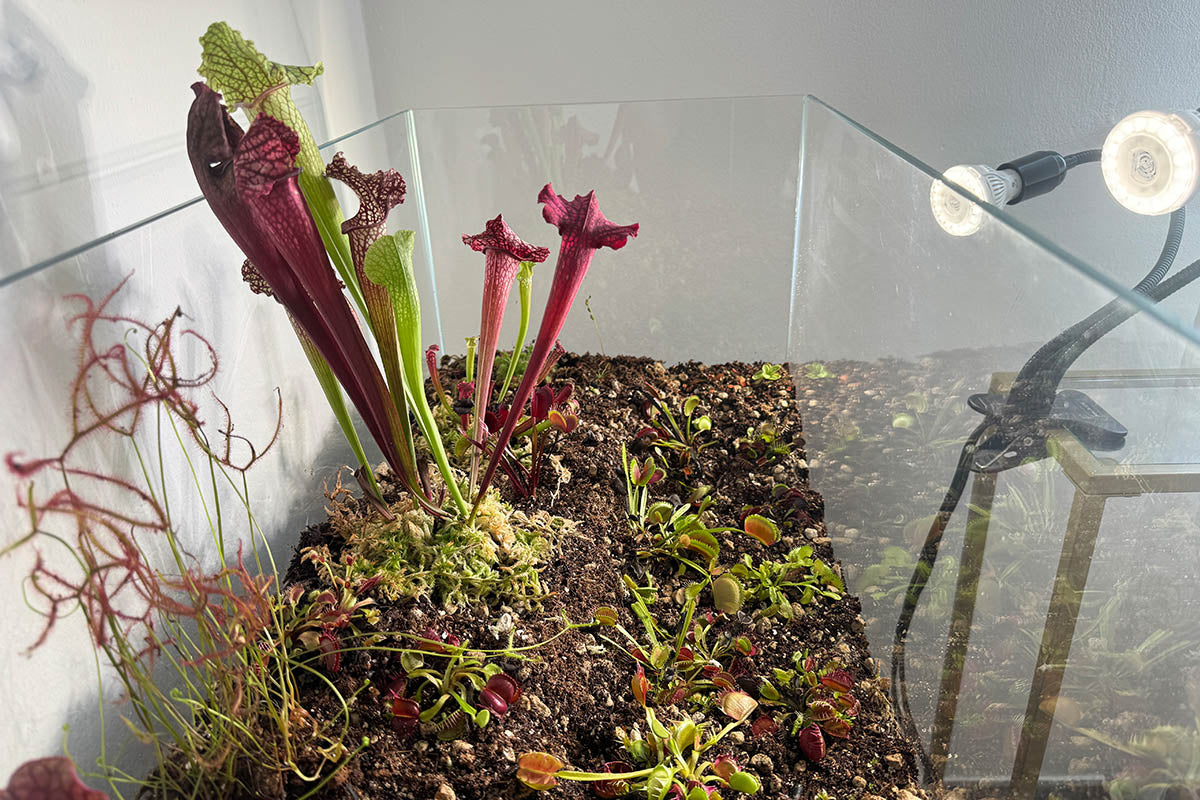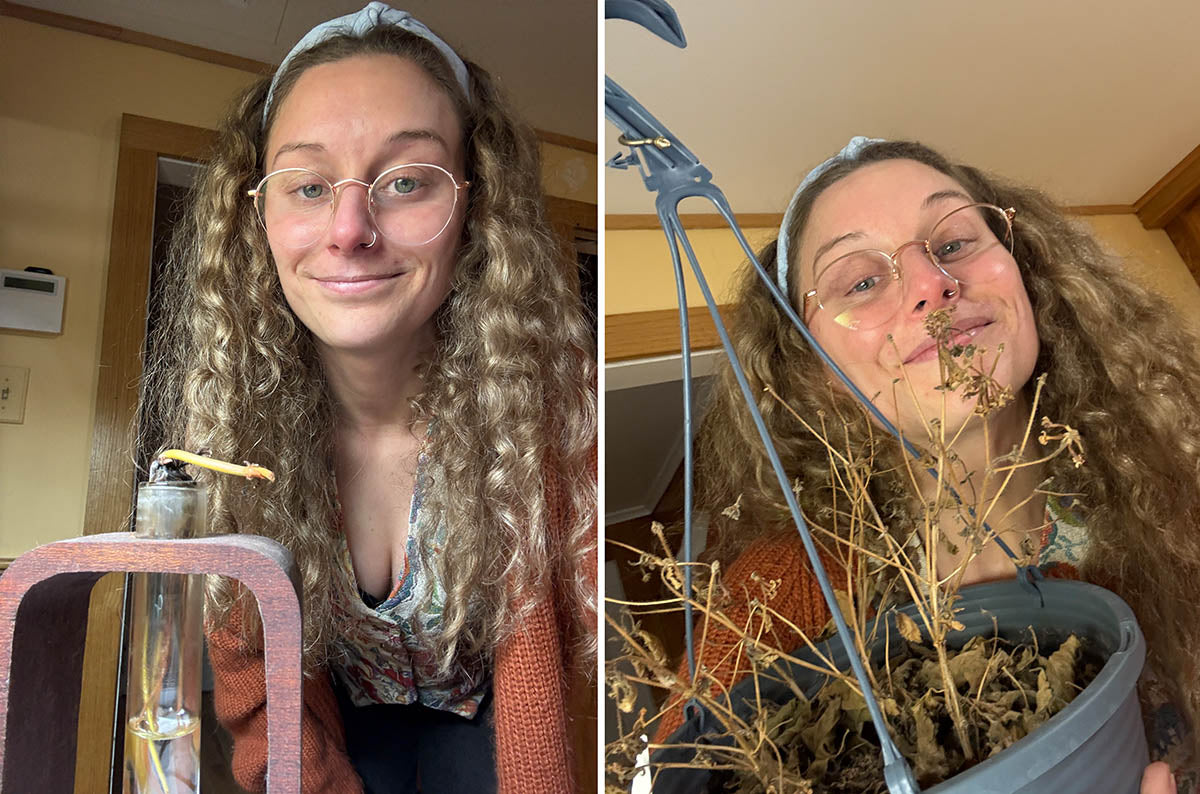Creator's name:Arianna.Bisagni
Creator's Instagram:@Arianna.Bisagni
Growing Carnivorous Plants: My Journey from Curiosity to Community
When I first started keeping plants, I never imagined I would one day have two full aquariums dedicated to carnivorous plants. Like many beginners, I started with the usual houseplants, but soon I discovered the unique beauty of Venus flytraps, Drosera, Nepenthes, and Pinguicula. What began as curiosity quickly became a passion that taught me patience, problem-solving, and the importance of creating the right environment for plants to thrive.
Starting Out: The First Traps
My journey began with a simple Venus flytrap. I was fascinated by its moving traps and unusual way of capturing insects. At the time, I thought all it needed was a sunny window and some water. Soon I learned that carnivorous plants are very different from normal houseplants—they thrive in nutrient-poor, acidic soil, and they need pure water, not tap water.
This was my first lesson: research matters. With a little reading and help from online communities, I began to understand that these plants are survivors of harsh habitats, and replicating those conditions indoors is the key to success.

Building My First Setups
I actually started out with two IKEA Akerbar cabinets — one for tropical species and one for temperate species. They worked surprisingly well at the beginning: compact, enclosed, and easy to manage for light and humidity.
But halfway through, I realized something every carnivorous plant grower eventually learns: you always need more space. My plants were outgrowing the cabinets, and my wish list kept getting longer. That’s when I upgraded to my current aquariums — a 100×40×50 cm tank for tropical plants, and an 80×35×40 cm tank for temperate species.
Lesson learned: If you’re starting with carnivorous plants, small enclosures like cabinets are a great first step. But be prepared to expand fast once you fall in love with them!


The Temperate Aquarium
My 80×35×40 cm tank became home to temperate species like Venus flytraps, Sarracenia, and temperate Pinguicula. I created a drainage layer of clay balls, topped it with pumice and carnivorous plant mix, and kept the soil evenly moist.
It was exciting to watch the first plants settle in:
l Different cultivars of Dionaea muscipula (with names like White Mamba, Goliath, and Twister).
l A few species of Drosera (sundews) like binata and intermedia.
l Sarracenia hybrids with tall, colorful pitchers.
l And some temperate Pinguicula, like Pinguicula planifolia and P. mundii.
I kept the water level in the drainage layer high enough to mimic their natural bogs. This became my “dormancy tank”—a place where plants could experience seasonal rhythms of growth and rest.

The Tropical Aquarium
At the same time, I wanted to explore the other side of carnivorous plant keeping: tropical species. For this, I set up a larger 100×40×50 cm aquarium for Nepenthes, Heliamphora, tropical Drosera, and Mexican Pinguicula.
This tank needed different conditions: high humidity, but without waterlogging. I used a drainage layer, live sphagnum moss, and a lighter mix of substrate. For the Mexican butterworts (Pinguicula), I built a raised “ping hill” with lava rock, where they could sit and stay drier while still benefiting from the humid environment.
Plants in this tropical aquarium include:
l Nepenthes hybrids like N. ventrata, N. Bloody Mary, and N. Gaya.
l Heliamphora species (H. x heterodoxa, H. angasima).
l Dozens of Pinguicula, from P. laueana with its crimson flowers, to P. cyclosecta and P. esseriana.
l Rare Drosera species, like D. graomogolensis and D. paradoxa.

Learning About Light
One of the biggest challenges I faced was lighting. Carnivorous plants need strong light to color up and grow properly. I experimented with clip-on grow lights, then upgraded to SANSI multi-head lamps.
Today, my dormancy tank uses two 3-headed SANSI clip lights (30 W total), while my tropical tank uses two 4-headed clip lights (40 W total). These lights are flexible enough to position over different sections of the tanks, ensuring all plants—from tiny sundews to tall Nepenthes pitchers—get the light they need.
Lighting was also where I started to feel part of a community. The more I shared photos and experiences, the more advice I received from growers who had been doing this for years.

Substrates, Springtails, and Small Discoveries
Along the way, I experimented with different substrates: carnivorous plant mix, pumice, live sphagnum, and volcanic gravel. Each plant has its preference, and I learned the importance of drainage, aeration, and avoiding fertilizers.
I even introduced springtails (tiny beneficial insects) into the soil. They help keep the substrate clean, breaking down mold and organic matter. It was a small detail, but it felt like adding a whole ecosystem into my tanks.
Another lesson was patience: some plants, like Drosera regia, grow slowly and need special care. Others, like Venus flytraps, reward you with quick growth and dramatic traps.

Why Carnivorous Plants Changed My View on Growing
Before starting this hobby, I thought plant care was about watering and waiting. Now I see it as creating micro-habitats—balancing light, humidity, soil, and even beneficial organisms.
These plants taught me:
l Observation matters: a small color change or leaf curl can mean too much or too little light, water, or humidity.
l Adaptation is key: every species has different needs, and you learn by adjusting.
l Community is inspiring: sharing my progress online has connected me to other growers around the world.

Looking Ahead
I’m still new to this world, but every week I learn something. My tanks are living experiments, and I’m always adjusting lighting, substrates, or layouts to give each plant the best conditions.
What started as one Venus flytrap has grown into two aquariums full of carnivorous species, each with its own microclimate. With the help of good lighting, reliable equipment, and shared knowledge, I’ve discovered a hobby that combines science, creativity, and a deep appreciation for nature’s strangest plants.
And the best part? Every time I look into my tanks, I see not just plants, but entire ecosystems thriving indoors.
Thanks for reading!
- Arianna Bisagni



